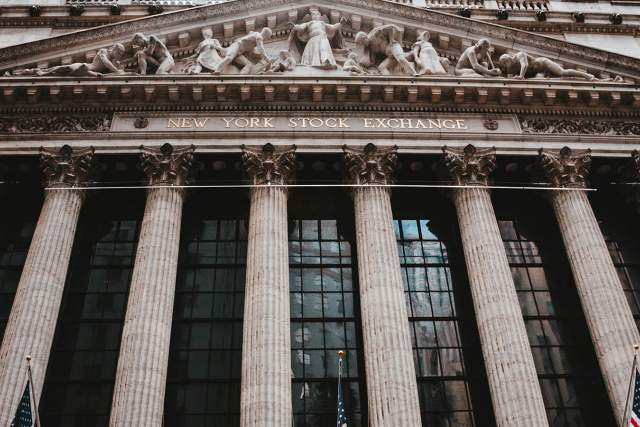The novel coronavirus pandemic raging right now is arguably the biggest economic and public health crisis in generations. Anyone with a clear head is at least very concerned about its impact on their families and friends and the world at large. In these unprecedented times, the first instinct for many academics is to ask what we, as a society, can learn from what’s happening around us.
For Tuck associate professor Jordan Schoenfeld, who specializes in the role of information in financial markets, that instinct led him to do some early work on the financial impact of the pandemic. It’s an issue no one has studied much yet, because this is the first time much of the global economy has been shuttered, as people across the world are under orders to stay home from work and not gather in groups, in an effort to slow the spread of the COVID-19 disease.
“We usually view economic crises as demand shocks,” says Schoenfeld, “where people stop spending money and we don’t understand why. In this case, governments are explicitly telling people to stay home, to not travel or go out, so the markets are trying to piece together what this means for companies.”
In “The Invisible Risk: Pandemics and the Financial Markets,” Schoenfeld begins his analysis about a year ago, when most publicly traded companies filed their annual reports. Specifically, he was trying to figure out if any firms in the beginning of 2019 considered a pandemic a key risk factor for their business. If they did, they were required to include it in section 1A of their annual report. Using the annual reports of the companies in the S&P 500 as his sample, he found that 46 percent of firms mentioned pandemics, or related risks such as diseases or health crises, as a risk factor.
We usually view economic crises as demand shocks, where people stop spending money and we don’t understand why. In this case, governments are explicitly telling people to stay home, to not travel or go out, so the markets are trying to piece together what this means for companies.
As we now know, many companies were effectively blind to the havoc a pandemic can cause. Schoenfeld found that during the period from January 2 through March 20 of this year, as the virus spread to Europe and North America and was declared a pandemic by the World Health Organization, 95 percent of companies in the S&P 500 decreased in value by an average of 32 percent. That translates to an economic loss of $18 billion per firm on average, or a staggering $9 trillion in total for those 500 firms. Schoenfeld was surprised that so many firms underestimated their exposure to a pandemic, but he was more surprised that the economic impact was about the same for most firms whether they considered themselves exposed to a pandemic risk or not. “There was almost no difference between them, down to the decimal point,” Schoenfeld says.

Tuck professor Jordan Schoenfeld’s research topics include financial contracts and the role of information in financial markets.
The dissonance between projected risk and actual risk represents, in some sense, a breakdown of the system of financial regulation. Annual reports are carefully compiled by managers, reviewed by in-house lawyers, and then audited by independent auditors. The risk factors listed in these reports are supposed to be informative to investors. “But you could argue they were virtually useless going into this pandemic,” Schoenfeld says. “I imagine next year’s annual reports will have pandemics as a risk factor.”
While much of the S&P 500 was cratering, some firms were hit harder than others. And some firms actually increased in value. At the industry level, Schoenfeld observed large decreases in firm value in petroleum and natural gas, apparel, restaurants and hotels, automobiles, transportation, machinery, and aircraft, ship and railroad firms. The firms with the largest decreases were Norwegian Cruise Lines (-86 percent), Noble Energy (-83.7 percent), Royal Caribbean Cruises (-83.4 percent), Halliburton (-80.6 percent), and Carnival (-80.5 percent). The firms that stayed on track or gained in value included Walmart (+0.4 percent), General Mills (+3.0 percent), Netflix (+0.6 percent), Clorox (+26.0 percent), and Regeneron Pharmaceuticals (+31.2 percent).
Schoenfeld also documents the unprecedented impact of the pandemic on the U.S. labor market. Unemployment claims in the first three weeks of March grew from 282,000 to 3.3 million to 6.4 million. By the beginning of April, the three-week total reached 16.8 million. Prior to the pandemic, the highest number of U.S. claims was 695,000, in October of 1982. The historic plummet in the labor market has set in motion an equally historic government intervention, with various stimulus packages planned for businesses and individuals totaling more than $2 trillion. “We’re seeing what happens when unemployment skyrockets, which is the government has to respond with some form of social insurance,” Schoenfeld says. “We have long been a country that has not been too fond of providing social insurance, but it’s become inescapable at this point. You just can’t have that many people not working.”
Schoenfeld’s paper just looks at a brief moment in time: the first three months of 2020. But that was by design. He wanted to quantify the immediate shock of the pandemic, before the government announced its stimulus plans. The market reaction to those plans would have added noise to the clear signal investors were sending as they made their initial and drastic reaction to a nearly wholesale shutdown of the economy. “The ultimate takeaway of the paper is that this issue is systemic,” Schoenfeld says. “Nobody is escaping the negative impacts.”
Jordan Schoenfeld’s teaching and research focus on financial contracts and the role of information in the financial markets. At Tuck, he teaches Financial Accounting and recently taught an executive education course in entrepreneurial accounting for startup founders.

